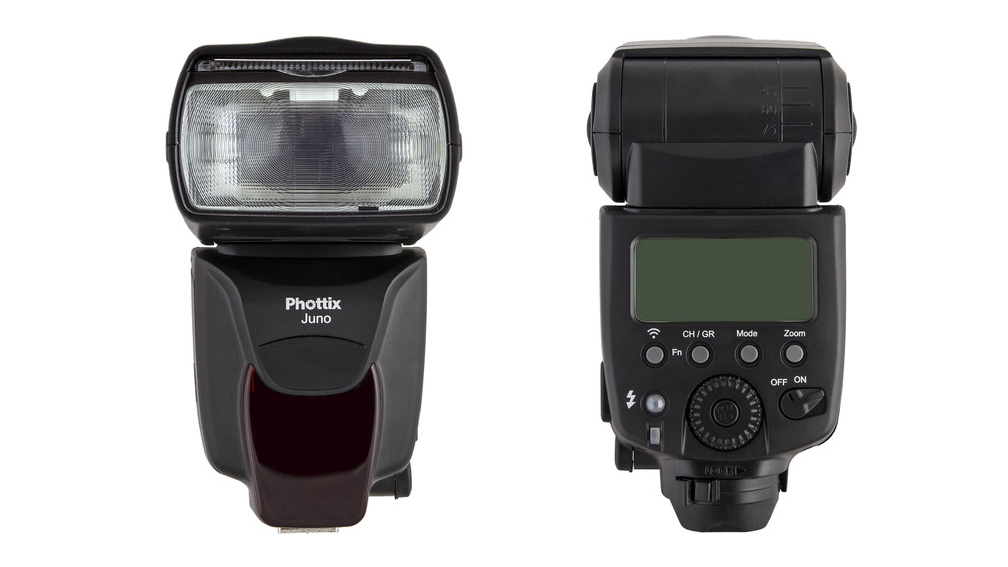Single-Point Manual Flash Gets the Job Done
Review by Michael Corsentino
Don’t discount manual flash; it’s an important part of any arsenal of lighting tools. As a matter fact, in the studio, in artificial-light-only scenarios, I default to manual 100% of the time. Why? It’s easy, consistent, and it’s never fooled by the reflective metering used with TTL flash. In mixed-light situations with ambient and flash, manual flashguns are the perfect complement to TTL units, serving expertly as fill and accent lights. In these situations, you can use TTL and High Speed Sync when needed (for example, for the key light), and augment with inexpensive manual lights for strobes that don’t need those features.
The Phottix Juno Manual Hot Shoe Flash is the perfect candidate for the job for Phottix users, as it pairs perfectly with much of their existing lighting ecosystem, making it easy to mix and match as needed, without breaking the bank. Radio-enabled, the Juno Manual makes working with off-camera flash a breeze. It can function as a master or slave in both radio and optical modes controlling power and zoom. It has an impressive wireless range up to 328.08’ when used in radio mode, and a recycle time of approximately 0.1–5 seconds, not too shabby!
When working wirelessly, the Juno provides users with 16 channels and 4 groups from which to choose. Its guide number of 190.29’ (58.00m), ISO 100 at 200mm position means plenty of power for most flashgun applications. Other amenities include the usual suspect features such as variable power from 1/1–1/128th, a bounce head with -7–90º range, a swivel head with 360º of rotation, and a zoom head with a full-frame range from 20–200mm.
Phottix isn’t reinventing the wheel here. Rather, with their Phottix Juno Manual Hot Shoe Flash, they’re giving existing users of Phottix Juno TTL and other lights in their ecosystem an inexpensive way to add additional manual lights to their workflow that will all play well together. ■







But can you fire it with a Phottix Odin II controller on a Sony camera? You can with a Mitros+ flash. I contacted Phottix and the customer service person didn’t know. Looking for manual only, not TTL.